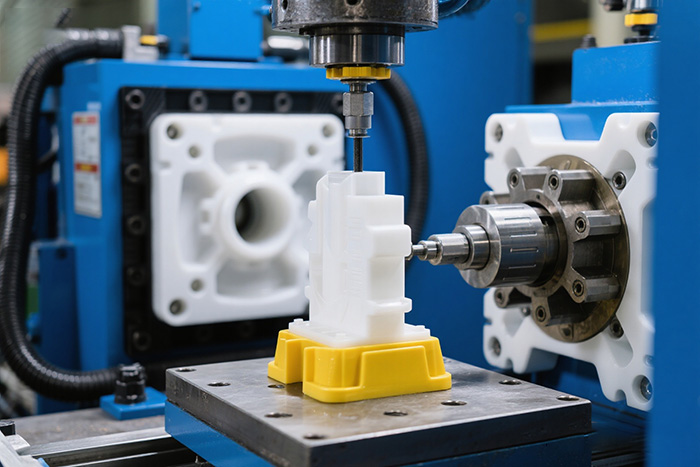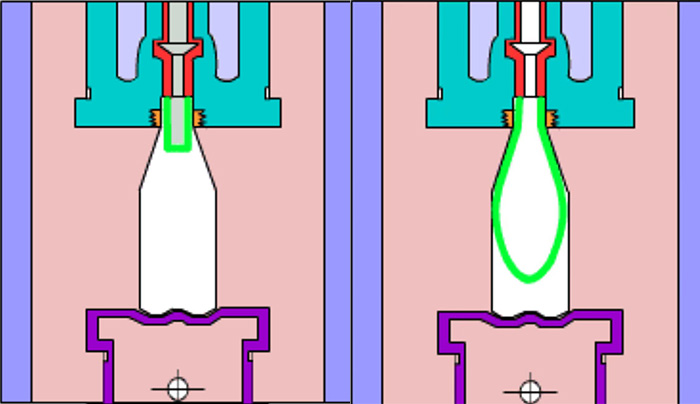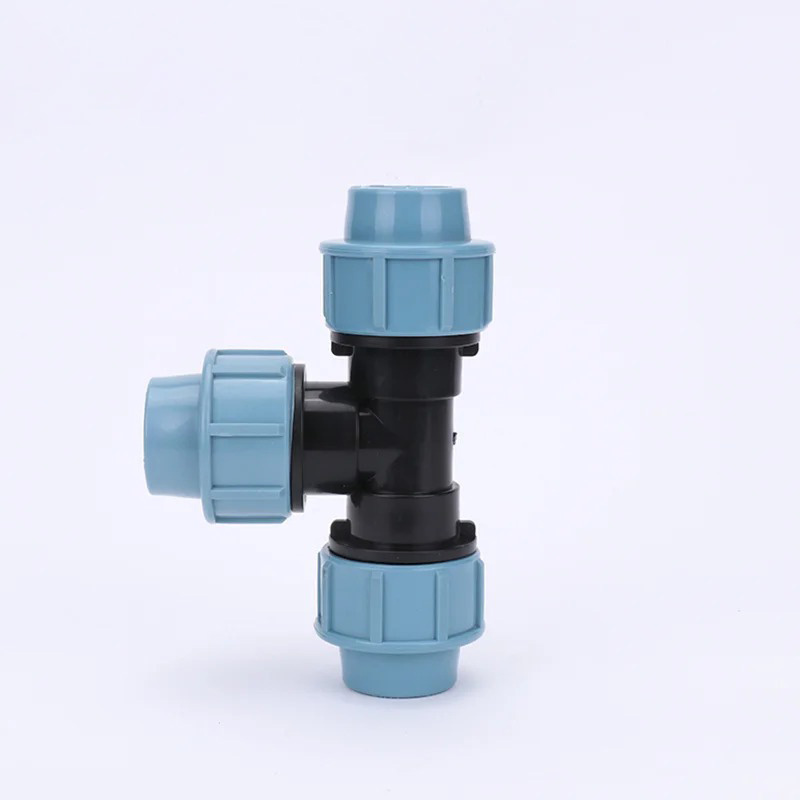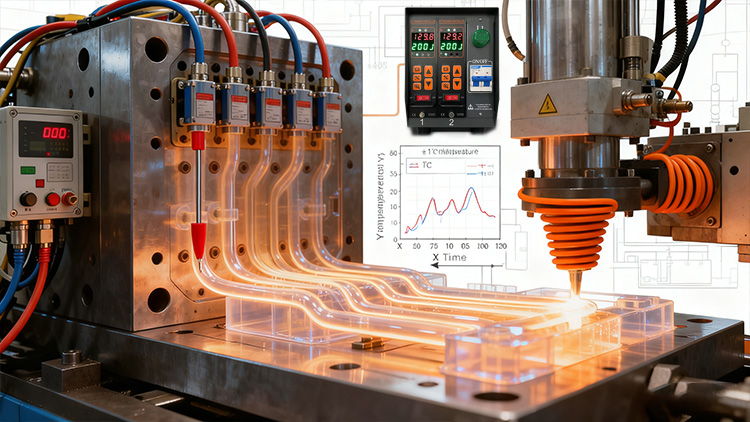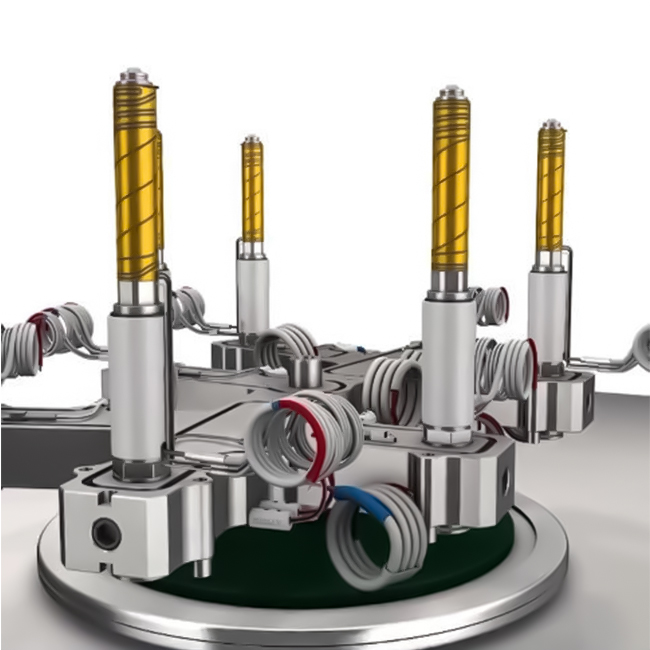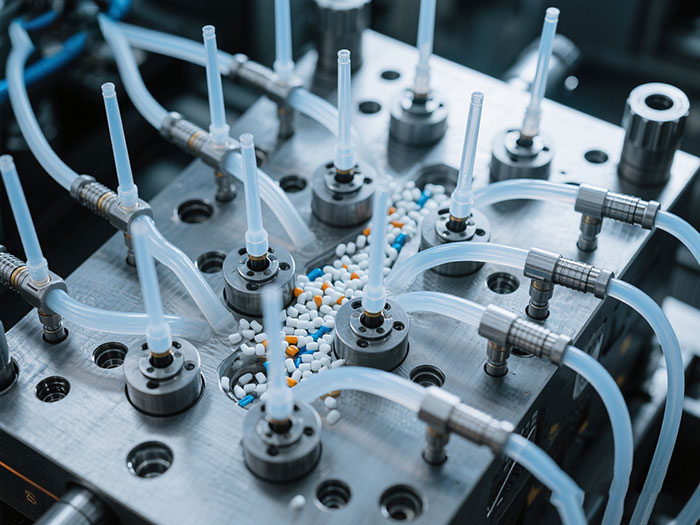A Comprehensive Guide to Selecting the Right Hot Runner Temperature Controller
2025-05-15
Choosing the right hot runner temperature controller is important. It helps keep injection molding smooth and results high-quality. A good controller keeps the temperature steady to avoid defects. This also helps reduce waste during production. To pick the best one, check if it fits your system. Look at key features and technical details carefully. Think about what your project needs, like for cars, medical tools, or everyday items. By doing this, you can work faster and get better results every time.
Understanding Hot Runner Temperature Controllers
What Is a Hot Runner Temperature Controller?
A hot runner temperature controller is a tool used in injection molding. It controls the heat in the hot runner system. This system keeps plastic melted as it moves through mold channels. The controller keeps the heat steady to avoid problems like uneven flow. It also stops the plastic from breaking down. By controlling the heat well, it helps make high-quality parts.
These controllers work using temperature sensors, PID control, and extra input/output features. For example, a type J thermocouple checks heat by creating voltage when hot. This voltage is turned into a temperature reading. PID control changes power to keep the right heat level. Fuzzy logic can make this even more accurate. Extra I/O features let it connect to alarms or adjust automatically during molding.
How Does a Hot Runner Temperature Controller Work?
The controller checks and adjusts the heat in the hot runner system. It uses thermocouples to measure heat at certain spots. If the heat changes from the set level, it adjusts the power to the heaters. This keeps the plastic at the best temperature for molding.
For example, a controller might run on 120 or 240 volts and handle 15 amps. It can keep heat between room temperature and 999°F (535°C) with ±1°F accuracy. Safety features like T/C break protection stop power if the thermocouple fails. This makes it safe and reliable to use.
Why Is It Essential for Injection Molding?
A hot runner temperature controller is key to good injection molding. It keeps the plastic flowing evenly and prevents defects like warping. By keeping the plastic melted, it reduces waste and speeds up production. It also helps make detailed parts with different needs.
These advantages save money and improve efficiency. Faster production means more parts made quickly. Less waste lowers material costs. This makes the controller important for industries like cars, medical tools, and everyday products.
Key Features of a Hot Runner Temperature Controller
PID Control for Accurate Temperature Management
A hot runner temperature controller uses PID control to manage heat levels. It checks the temperature and adjusts heater power to keep it steady. This helps avoid temperature changes that can cause defects in molded parts.
For example, if the temperature gets too high, the controller lowers heater power. If the temperature drops, it increases power to fix it. These adjustments keep the molding process smooth and consistent. Some advanced controllers use fuzzy logic for even better accuracy.
Tip: Choose a controller with advanced PID algorithms. These help prevent overheating or underheating problems.
Diagnostics and Error Detection
Modern controllers have tools to find and fix problems early. They check the system for issues like broken thermocouples, heater failures, or wiring errors. These features improve safety and reduce downtime.
If a thermocouple breaks, the controller may sound an alarm or shut down the zone. Some controllers show error codes to help you quickly fix the problem.
Note: Check your controller's diagnostic logs often. This helps you find repeated issues and keep the system running well.
Temperature Stability and Uniformity
Keeping the temperature steady is important for good molding results. A hot runner temperature controller ensures heat stays even across all mold zones. This prevents problems like uneven flow, warping, or shrinking.
Steady temperature makes parts dimensionally accurate.
Even cooling stops defects like warping or cracking.
Proper mold heat improves part quality and process stability.
The strength and stiffness of plastics depend on the right mold temperature. Using a controller that keeps heat uniform helps meet strict part requirements.
Did You Know? Mold temperature affects polymer crystallinity, which impacts part strength and durability.
Compatibility with Industry Standards
Picking a hot runner temperature controller that follows industry standards is important. It ensures the controller works well and fits your system. Meeting these standards also keeps your equipment safe and high-quality.
Why Industry Standards Matter
Standards set rules for safety, efficiency, and working together. Controllers that follow these rules lower risks and make production smoother. For example, ISO or CE certifications show the controller meets global safety rules. This is extra helpful if your business works worldwide.
Tip: Look for certifications like ISO 9001 or CE marking. These prove the controller passed strict tests.
Common Standards to Look For
Here are key standards to check when choosing a controller:
Thermocouple Standards: Make sure it supports common types like Type J or Type K. These give accurate heat readings and work with most systems.
Voltage and Frequency Standards: Check if it matches your region's power needs (e.g., 120V/60Hz in North America or 230V/50Hz in Europe).
Communication Protocols: Find controllers with protocols like Modbus or Ethernet. These help connect easily with other machines.
Safety Standards: Look for UL or CSA certifications. These ensure the controller is safe and lower electrical risks.
Benefits of Compatibility
Using a controller that meets industry standards has many benefits:
Easy Setup: Standard controllers fit well with current equipment, saving time.
Better Performance: Following standards reduces malfunctions and keeps things running smoothly.
Future-Ready: Controllers that meet today’s rules are likely to work with future tech.
How to Verify Compatibility
Check the controller’s specs and certifications to confirm compatibility. Manufacturers usually provide documents showing compliance with standards. If unsure, ask the supplier or an expert for advice.
Note: Compatibility isn’t just about standards. It also means the controller should match your production needs.
Choosing a controller that meets industry standards improves molding results. It boosts efficiency, safety, and overall performance in your system.
Specifications to Check in a Hot Runner Temperature Controller
Voltage and Power Needs
When picking a hot runner temperature controller, make sure it matches your system's voltage and power needs. Most controllers work with common voltages like 120V or 240V, depending on where you are. Using the wrong voltage can harm the controller or make it stop working.
Power needs depend on how many zones and heaters your system has. A controller without enough power might fail to keep steady temperatures. This can cause defects in the molded parts. Always check the controller's power rating and compare it to your system's requirements.
Tip: Check your facility's power setup before buying a controller. This avoids problems and saves money on fixes later.
Output Current and Load Limits
The output current and load limits of a hot runner temperature controller show how much power it can send to the heaters. This is important for keeping steady heat, especially in systems with many zones.
Different controllers handle different loads. For example, the SISCO-TEMPC-S201 model can handle up to 15A, with a load range of 50W-1650W at 110V or 100W-3600W at 240V. Here's a simple comparison:
Model | Load Capacity |
|---|
SISCO-TEMPC-S201 | 15A (50W-1650W, 110V) / (100W-3600W, 240V) |
Picking a controller with the right load limit helps it work well and avoids overheating or weak performance.
Note: Add up your system's total load before choosing a controller. This prevents overloading and keeps it running smoothly.
Temperature Range and Speed of Adjustment
The temperature range and speed of adjustment affect how well a hot runner temperature controller works. The temperature range shows the lowest and highest temperatures the controller can handle. Most controllers cover a wide range, like room temperature to 999°F (535°C), making them useful for many tasks.
Speed of adjustment means how fast the controller reacts to temperature changes. A quicker response keeps the system's heat steady, even if there are sudden changes. This is very important for tricky molds or materials that need exact temperatures.
Did You Know? A slow controller can cause uneven heating, leading to problems like warping or incomplete parts.
When checking these features, think about the materials and accuracy your project needs. A controller with a wide temperature range and fast response will give better results and more options.
Communication and Integration Options
Today's hot runner temperature controllers have smart communication features. These help connect the controller to other machines, making molding faster and easier.
Types of Communication Protocols
Controllers use different communication methods to share data with devices. These devices can include molding machines or monitoring tools. Common methods are:
Modbus: A popular system for factory machines. It allows easy data sharing.
Ethernet: Offers fast data transfer and lets you control it remotely.
RS-232/RS-485: Best for small systems needing simple connections.
Tip: Pick a controller that works with your current machines. This saves time and avoids setup problems.
Benefits of Integration
Integration lets you control the controller from one main system. This saves time and reduces manual work. For example, you can change heat settings or check for issues from afar. It also collects data to improve your process over time.
How to Evaluate Communication Options
When choosing a controller, check its communication features. Look for remote access, network compatibility, and support for many protocols. If you use special software, make sure the controller works with it.
Did You Know? Some controllers let you monitor them online from anywhere.
Thermocouple Resolution and Adjustment Capabilities
Thermocouples measure heat in hot runner systems. A controller's resolution and adjustment features decide how well it handles heat changes.
Importance of Thermocouple Resolution
Resolution shows the smallest heat change the controller can notice. Better resolution means more accurate heat control. For example, a 0.1°F resolution catches tiny changes, keeping heat steady.
Good resolution is key for projects needing exact heat, like medical tools or car parts. It prevents problems caused by uneven heating or cooling.
Adjustment Capabilities
Adjustment features let you fine-tune thermocouple settings. This helps the controller work better with your system. Tools like offset adjustment fix errors caused by the environment or system setup.
How to Choose the Right Thermocouple Features
When checking thermocouple features, think about these:
Type Compatibility: Make sure it works with common types like Type J or K.
Resolution: Choose one with high resolution for better heat control.
Adjustment Options: Look for calibration and offset adjustment tools.
Note: Calibrating thermocouples often keeps them accurate and lasting longer.
By picking a controller with good thermocouple features, you’ll get better heat control and higher-quality parts.
Application-Specific Needs for Hot Runner Temperature Controllers
Uses in the Automotive Industry
Making car parts needs accuracy and speed. Hot runner controllers help make plastic parts like dashboards and bumpers. They keep the heat steady, stopping problems like warping or uneven surfaces. This ensures all parts meet strict car industry rules.
These controllers can manage many zones at once. This is helpful for big or complex molds used in car production. Controlling each zone well improves material flow and shortens production time. This makes work faster and more efficient. Plus, these controllers are tough and handle high-volume production easily.
Needs in Medical Device Manufacturing
Medical tools need exact precision and must follow strict rules. Hot runner controllers keep heat steady, which helps make perfect medical parts. They control heat in many zones, stopping problems like flashing or material damage.
They meet FDA rules by keeping quality consistent.
They speed up production and lower waste, saving time and money.
They make precise parts that meet medical standards, where small errors can cause big problems.
Using these controllers ensures reliable and accurate production of medical items like syringes and surgical tools.
Uses in Packaging and Consumer Goods
Packaging and everyday items need fast and steady production. Hot runner controllers improve molding by keeping heat even. This helps materials flow better, reduces waste, and makes molds work well. For example, they help make strong yet lightweight plastic packaging.
Market Area | Role in Packaging |
|---|
Hot Runners | Help mold plastic packaging efficiently. |
Temperature Controllers | Speed up production and cut down waste. |
These controllers also help make consistent products while lowering environmental harm. By reducing plastic waste, they support eco-friendly manufacturing, which is important today.
Custom or Specialized Applications
Some industries need special solutions for their molding processes. A hot runner temperature controller can be adjusted to fit these needs. You might use materials or molds that need very exact temperature control. Custom controllers are flexible and handle these challenges well.
Why Customization Is Important
Special applications often use tricky molds or materials with unique heat needs. For example, making airplane parts may need controllers for super-high temperatures. Electronics production might need controllers that react quickly to keep quality steady. Customization makes sure the controller fits your exact needs.
Features to Look for in Custom Controllers
When picking a custom hot runner temperature controller, look for features that improve precision and flexibility. Key things to check include:
Advanced Zone Control: These let you manage molds with different heat needs.
Material-Specific Settings: Designed for certain plastics, they help avoid defects.
Enhanced Safety Features: Extra safety tools protect during high-risk tasks.
Tip: Share your specific needs with the supplier to get the right controller.
Examples of Specialized Applications
Custom controllers are great for industries like airplanes, electronics, and luxury goods. For example:
Aerospace: They handle high-heat materials like PEEK or PPS.
Electronics: Quick changes stop overheating in fragile parts.
Luxury Goods: Exact control creates perfect finishes for high-end items.
Custom solutions boost efficiency and quality, making them essential for special industries.
Comparing Types of Hot Runner Temperature Controllers
Single-Zone vs. Multi-Zone Controllers
When picking a hot runner temperature controller, you’ll choose between single-zone and multi-zone types. Single-zone controllers control heat in just one area. They are good for simple molds or small projects. These controllers are easy to use and cost less for basic tasks.
Multi-zone controllers manage heat in several areas at once. They work best for complex molds needing different temperatures. Each zone is controlled separately, keeping heat even. This improves part quality and lowers defects. For detailed designs or big molds, multi-zone controllers give better accuracy and flexibility.
Tip: Think about your mold’s complexity and how many zones it needs before deciding.
Advanced Controllers vs. Basic Models
Advanced controllers have modern features that boost performance. They include tools like live monitoring, smart controls, and vision system links. These features make them more accurate and efficient. Basic models, however, have fewer features and work for simple jobs.
Here’s a quick comparison:
Feature/Metric | Advanced Controllers | Basic Models |
|---|
Path Planning Algorithms | Smart algorithms for better movement | Simple movement planning |
Real-time Monitoring | Yes, with smart control options | Limited or none |
Intelligent Vision System Integration | Built-in for quality checks | Not available |
Data Logging | Detailed tracking of performance | Minimal tracking |
Integration with Injection Molding | Works smoothly with other machines | Basic connection |
If you need high accuracy and detailed data, advanced controllers are worth it.
Modular vs. Integrated Systems
Modular systems let you add or remove parts as needed. They are flexible and can grow with your business. You can upgrade parts without replacing the whole system.
Integrated systems combine everything into one unit. They are small and simple to set up. These systems are great for tight spaces or when ease of use is important.
Note: Modular systems are better for future changes, while integrated systems are best for fixed setups.
Tips for Picking the Best Hot Runner Temperature Controller
Check Supplier Help and Warranty
When picking a hot runner temperature controller, supplier help is key. Good support means problems get fixed fast, avoiding delays. Choose suppliers offering 24/7 help or on-site service. This can save time and prevent expensive stoppages.
Warranties are also very important. A strong warranty protects your money and gives peace of mind. Read the warranty details carefully. Does it cover parts, labor, or both? How long does it last? Longer warranties often show the maker trusts their product. Always pick a supplier known for honoring warranties.
Tip: Look at customer reviews or case studies to check the supplier’s support and service.
Think About Maintenance and Growth
Maintenance needs should guide your choice. Easy-to-fix controllers reduce downtime and keep production smooth. Look for features like modular designs or self-check tools. These make fixing and finding problems quicker and easier.
Growth is another thing to think about. If your production grows, your controller should grow too. Modular systems let you add zones or upgrade parts without buying a new unit. This saves money over time and keeps your system ready for the future.
Did You Know? Modular controllers lower repair costs by letting you replace only broken parts.
Focus on Long-Term Savings
The price tag matters, but long-term savings are more important. A good hot runner temperature controller might cost more upfront but saves money later. Energy-saving models cut power bills. Strong parts mean fewer repairs and replacements.
Think about how the controller affects production quality. Steady temperature control reduces defects and waste. Over time, these savings are worth more than the initial cost.
Pro Tip: Add up all costs, like energy, repairs, and downtime, before deciding.
Test Compatibility with Existing Equipment
Before buying a hot runner temperature controller, make sure it works well with your current equipment. This avoids problems and makes setup faster. Start by checking your system's details, like voltage, thermocouple types, and communication methods. Match these with the controller's features to ensure they fit.
If your system uses certain thermocouples, like Type J or Type K, confirm the controller supports them. Also, check the voltage. For example, a 240V system won’t work with a 120V-only controller. Communication methods, such as Modbus or Ethernet, are also important. These help the controller connect with other machines and software in your production line.
Compatibility isn’t just about technical details. Think about how the controller fits physically and how easy it is to install. Some controllers might need extra parts or changes to connect properly. Ask the supplier for guides or charts to make installation easier.
Tip: Try the controller with your system before buying it. This helps spot any problems early and ensures everything works smoothly.
Consult Experts for Tailored Recommendations
Getting advice from experts can help you pick the right hot runner temperature controller. Professionals know the details and can guide you to the best choice. They look at your needs, mold design, and materials to suggest a controller that works well.
Talk to experienced suppliers or industry experts. Share details like the number of zones, temperature range, and how much you plan to produce. They can recommend controllers with features like multi-zone control or modular designs that match your needs.
You can also ask engineers or technicians who work with injection molding systems. Their experience can help solve problems and find the best solutions. For instance, they might suggest controllers with better diagnostics for tricky molds or precise tasks.
Did You Know? Many suppliers offer free advice or support to help you choose the right controller.
By asking experts for help, you lower the chance of picking the wrong controller. This ensures your production runs smoothly and meets quality standards.
Picking the right hot runner temperature controller is important. It helps your molding process match your project needs. A good fit improves efficiency and makes better products. Balancing features, specs, and cost avoids wasting money. Expert help can save time and prevent expensive errors.
FAQ
What makes single-zone and multi-zone controllers different?
Single-zone controllers heat one area, perfect for simple molds. Multi-zone controllers heat several areas at once, great for complex molds. Pick based on your mold's design and production needs.
Tip: Use multi-zone controllers for detailed molds needing even heat.
How can I check compatibility with my equipment?
Look at the controller's voltage, thermocouple type, and communication methods. Match these to your system's details. Also, check size and setup needs to avoid problems.
Note: Test the controller with your system before buying it.
Which is better: modular or integrated systems?
Modular systems let you upgrade or fix parts easily. Integrated systems combine everything, making them simple and compact. Modular systems are good for growing businesses, while integrated ones fit fixed setups.
System Type | Best For |
|---|
Modular | Growth and flexibility |
Integrated | Simplicity and small spaces |
What certifications should a controller have?
Look for certifications like ISO, CE, UL, or CSA. These prove the controller is safe, high-quality, and meets industry rules. Certified controllers are also reliable for global use.
How can I lower maintenance costs?
Pick controllers with self-check tools and modular designs. Calibrate thermocouples regularly to avoid errors. Good care keeps the controller working longer and reduces downtime.
Pro Tip: Do regular checks to find and fix problems early.
